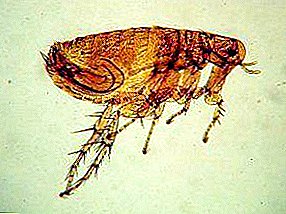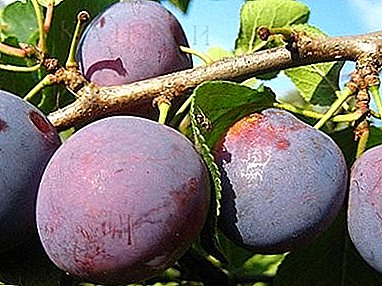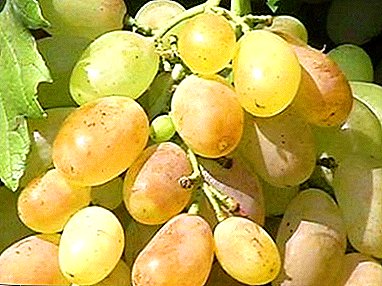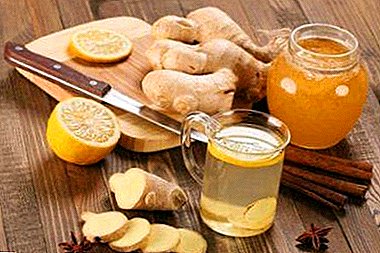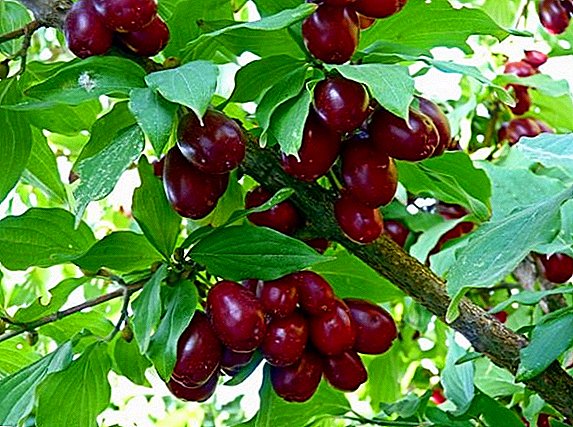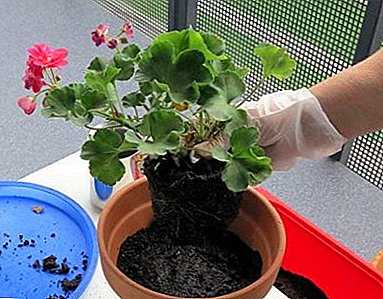 A well-groomed garden with properly planted plants does not create conditions conducive to the development of diseases and pests, therefore compliance with the rules of agricultural engineering is the basis for combating diseases and pests of black currant.
A well-groomed garden with properly planted plants does not create conditions conducive to the development of diseases and pests, therefore compliance with the rules of agricultural engineering is the basis for combating diseases and pests of black currant.
Planting black currant
Black currants can be planted in the spring, before the buds have blossomed, but the optimal time for planting is in late September - early October.
Seedlings should be healthy. It is advisable to choose a two-year seedlings with roots of 15-20 cm and ground shoots of about 30-40 cm. The soil should be chosen fertile, acidic and marshy soil should be avoided.
For each bush, it is necessary from 2.5 to 3 m, and the distance between the rows should be at least 2 m. The depth of the pit should be about 50 cm and at least 40 cm in diameter. Seedlings when planting should be placed at an angle.
Next to the currant bushes should not be coniferous trees.
Varieties of varieties of black currant.
Red currant. Find out here all about planting and caring for her.
Growing basil from seeds in our article //rusfermer.net/ogorod/listovye-ovoshhi/vyrashhivanie-i-uhod/vyrashhivanie-bazilika-iz-semyan-metody-polucheniya-kachestvennogo-urozhaya.html.
Growing and caring for black currants
To prevent diseases and get a good harvest of black currant, you must:
1. In spring before bud break:
- cut diseased and dry branches affected by gall midge larvae and glass case;
- Loosen the soil, make nitrogen fertilizers, mulch the soil;
- Spray the bushes and soil with nitrafen and Bordeaux with a liquid against pests and fungal diseases;
 2. Before flowering:
2. Before flowering:
- spray bushes with 10% concentrate of karbofos emulsion against mites (kidney and spiderwebs), aphids and other pests;
- spray bushes Bordeaux liquid against fungal diseases;
3. During flowering to identify and remove the bushes that are affected by terry;
4. Immediately after the currant has blossomed, spray the bushes with colloidal sulfur and karbofos against the sawflies, mites and moth;
5. After 10 days, repeat the procedure;
6. After collecting the berries, spray the plants with Bordeaux mixture, copper sulphate, karbofos against pests and diseases;
7. In the autumn, cut out old branches, burn down the fallen leaves, dig up the soil in rows, digging in the remains of leaves, and mulch the soil.
You can also use decoctions and infusions of insecticidal plants, which cause less damage compared to pesticides. When spreading diseases and large numbers of pests, chemical protection measures should be used.
Common diseases of black currant and fight against them
Anthracnose
Anthracnose, the causative agent of which is a fungus that multiplies spores, affects young shoots, leaves, petioles and currant stalks.
 Vague brown spots appear on leaves with a diameter of approximately 2.5 mm, in the middle of which a dark tubercle is visible. With the further development of anthracnose, the spots begin to coalesce, the leaves turn brown in color, dry and curl up at the edges, and then fall.
Vague brown spots appear on leaves with a diameter of approximately 2.5 mm, in the middle of which a dark tubercle is visible. With the further development of anthracnose, the spots begin to coalesce, the leaves turn brown in color, dry and curl up at the edges, and then fall.
The lower part of the shoots becomes bare, sores appear on the shoots and petioles. In bushes affected by anthracnose, the growth of young shoots decreases, the yield decreases. Bushes heavily affected by the fungus, die in 4 years.
When a disease is detected in early spring or autumn, the affected shoots are cut out. Shrubs before blooming buds should be sprayed with nitrophene (10 liters of water per 300 g). Before flowering, after it and after picking the fruit, spray with Bordeaux liquid.
Recommendations gardeners - Growing broccoli.
How to grow a cauliflower in your garden read here //rusfermer.net/ogorod/listovye-ovoshhi/vyrashhivanie-i-uhod/vyrashhivanie-tsvetnoj-kapusty-v-otkrytom-grunte.html.
Septoria
With septoria or white spotting, there is a premature fall of the leaves, poor growth of shoots and their partial death, drying of the buds. The causative agent of the disease is a mushroom.
When a disease occurs in June, numerous round or angular brown spots appear on the leaves, which then brighten in the center, and the border remains brown.
Later, black spots appear on the spots, in which there are spores of the fungus. After the departure of the dispute on the spot spots an ulcer. Currant bushes are massively infected at the end of summer.
In early spring, before the buds bloom, the soil and bushes are sprayed with nitrafen. With the development of the disease apply Bordeaux fluid.
Mealy dew
Mealy dew is a fungal disease that affects all parts of a plant. The damaged parts of the currant are first covered with a powdery white patina that can be easily wiped off, and over time becomes denser and resembles a dark brown felt.
 The affected shoots wither and die, the fruits do not develop and fall prematurely, the leaves curl. For several years, with a strong defeat, the plants die.
The affected shoots wither and die, the fruits do not develop and fall prematurely, the leaves curl. For several years, with a strong defeat, the plants die.
Shrubs and soil should be sprayed with iron sulfate (10 liters of water per 300 g). When powdery plaque appears, spray currant with a solution of soap and soda ash. Freshly prepared bleach is also used (10 liters of water for 1-2 tablespoons).
Processing should be carried out 2 weeks before harvesting. After picking berries, preparations of basezol, sulfur, 10% emulsion of Topaz are used.
It is also good to use infusion of rotted manure (forest litter, hay, greenhouse earth). For the infusion, 1 part of manure and 3 parts of water are taken, insisted 3 days, three times diluted with water and filtered.
Currant sprayed infusion in cloudy weather in 3 stages: before flowering, after and before the leaves.
Learn on our website how to grow Chinese cabbage.
We recommend reading the features of planting seedlings of cabbage in the ground //rusfermer.net/ogorod/listovye-ovoshhi/vyrashhivanie-i-uhod/vyrashhivanie-rassady_kapusti_v_domashnih_usloviyah.html.
Reversion
Currant reversion or terry - a viral disease that affects the entire plant and leads to currant infertility. Transmitted through planting material and kidney mite.
Manifested in the deformation of the leaves, which become elongated, three-lobed, with pointed ends, decreases the number of veins. Leaves lose their peculiar smell, they may acquire a purple hue. Fruits are not formed.
Sick bushes to root out and burn. Systematically fight the kidney mite.
Glass rust
Goblet rust, caused in spring by spores of the fungus, is characterized by the appearance of orange pads on the young shoots, leaves, flowers and fruits, which by the end of May resemble the accumulation of goblets. Further development of the fungus occurs on sedge, where the wind carries the spores. Affected flowers, leaves and berries fall.
Spray currant bushes three times with Bordeaux liquid. In summer, mow sedge, collect fallen leaves and remove the affected shoots.
Columnar rust
 Currant leaves are affected by columnar rust, which is manifested by small yellowish spots and bright orange pads on the underside of the leaf. When the disease leaves prematurely fall, which leads to a decrease in yield next year. More often affected currants, near which coniferous trees grow.
Currant leaves are affected by columnar rust, which is manifested by small yellowish spots and bright orange pads on the underside of the leaf. When the disease leaves prematurely fall, which leads to a decrease in yield next year. More often affected currants, near which coniferous trees grow.
Spray Bordeaux liquid before flowering and after it, as well as after the harvest.
Regularly caring for the black currant bushes, in time removing the affected shoots and treating the soil and bushes in a timely manner with drugs that prevent the development of diseases and the reproduction of pests, you will be able to harvest a wonderful harvest every year.


 Varieties of varieties of black currant.
Varieties of varieties of black currant. Recommendations gardeners - Growing broccoli.
Recommendations gardeners - Growing broccoli. Learn on our website how to grow Chinese cabbage.
Learn on our website how to grow Chinese cabbage.